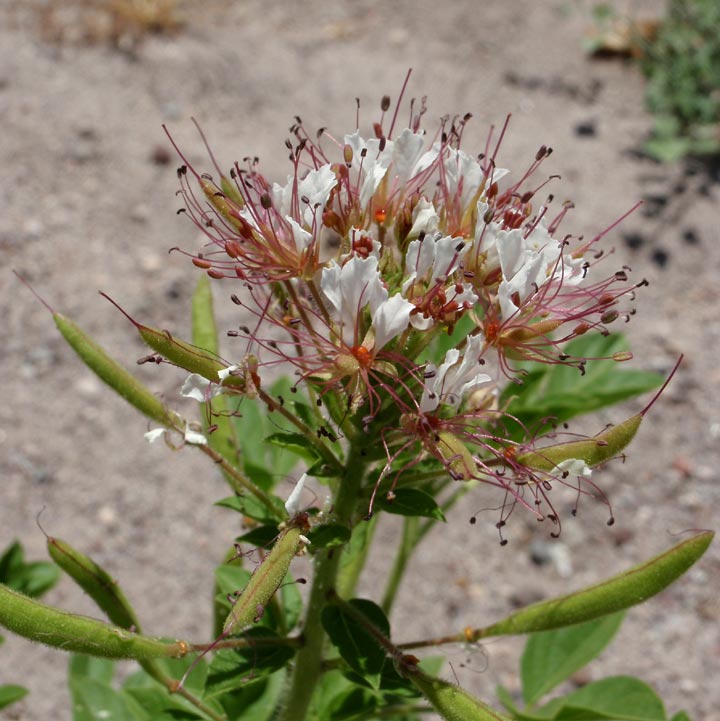|
Cleomaceae |
|
|
Herbs or shrubs, annual or perennial (usually deciduous, evergreen in Peritoma arborea); spines usually absent (present in Hemiscola and Tarenaya); glabrous or glandular-pubescent, hairs stalked or sessile (producing glucosinolates). Stems usually erect, sometimes spreading or procumbent; branched or unbranched. Leaves alternate, spirally arranged (usually palmately compound, sometimes simple); venation pinnate; stipules usually present (usually caducous, sometimes deciduous, 3-8-palmatifid, linear, threadlike, minute, scalelike, or absent, nodal (stipular) spines present in Tarenaya and Hemiscola); petiole present (pulvinus usually present, nectaries absent, petiolar spines sometimes present, petiolules present); blade margins entire, serrate, or serrulate. Inflorescences terminal or axillary, usually racemose, sometimes flat-topped, or flowers solitary (usually elongated in fruit); bud scales absent; bracts present or absent (unifoliate, often trifoliate proximally, bracteoles absent). Pedicels present. Flowers usually bisexual (developmentally unisexual within sections of racemes), actinomorphic or slightly zygomorphic, rotate to crateriform, campanulate, or urceolate; perianth and androecium hypogynous; sepals persistent or deciduous, 4, distinct or connate basally; petals 4, attached directly to receptacle, imbricate, distinct, equal or unequal; intrastaminal nectary-discs, scales, or glands present or absent; stamens [4-]6-27[-35]; filaments free or basally adnate to gynophore (or along proximal 1/3-1/2 in Gynandropsis) or androgynophore, glabrous or pubescent; anthers dehiscing by longitudinal slits, pollen shed in single grains, binucleate, commonly tricolporate; gynophore present or absent; pistil 1; ovary 1-carpellate (except 2 in Oxystylis), 2-locular; placentation parietal; ovules 1-18(-26+) per locule, anatropous, bitegmic; style 1 (straight, relatively short, thick, not spinelike in fruit, except in Oxystylis, sometimes in Wislizenia); stigma 1, capitate, unlobed. Fruits capsular or nutlets (usually stipitate from elongation of gynophore, erect to divergent, usually not inflated), valvate, elongate (± dehiscent by 2 lateral valves, except in Polanisia), or schizocarps (inflated in Peritoma arborea), indehiscent or dehiscent. Seeds 1-65[-200], tan, yellowish brown, light brown, pale green, brown, reddish brown, s |
|

